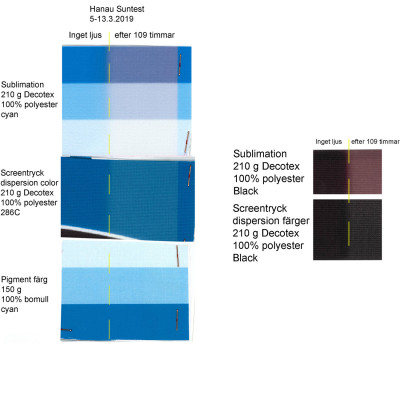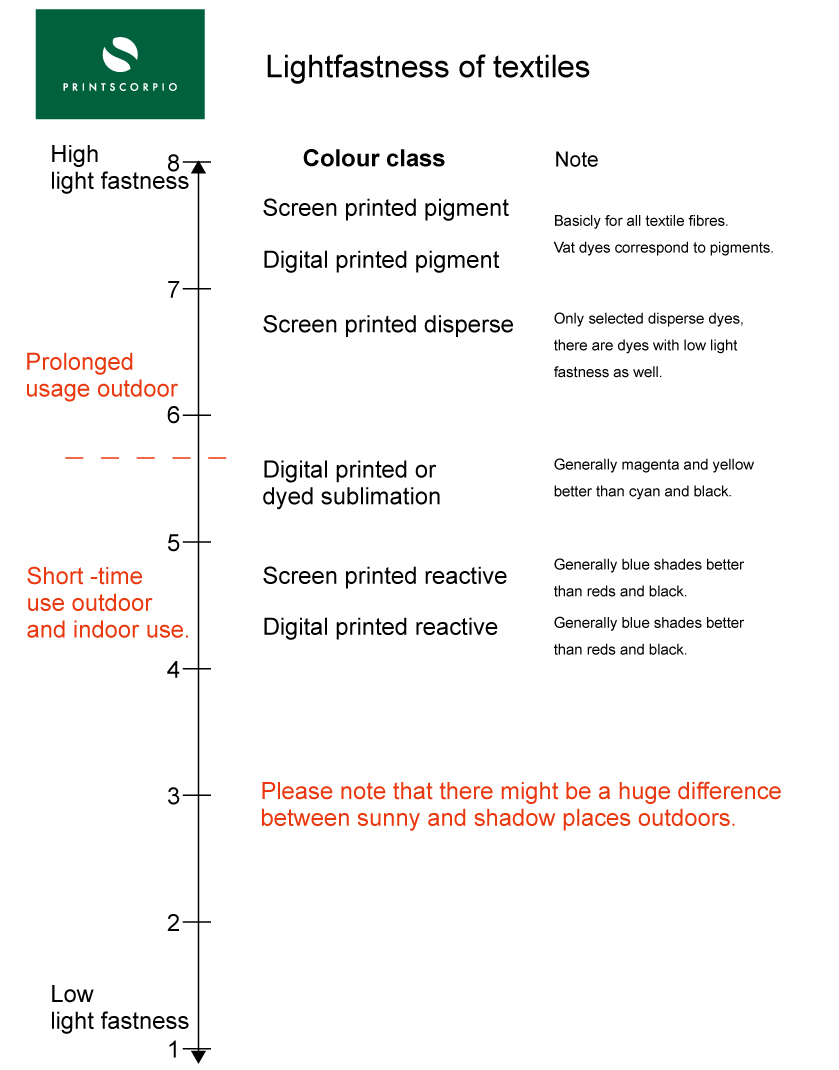No products available yet
Stay tuned! More products will be shown here as they are added.
Filter By
The lightfastness of textiles is most influenced by the type of dye or pigment. Sometimes the fabric and color tone also play a role in lightfastness. Screen printing produces normally better light-fastness than digital printing.

No products available yet
Stay tuned! More products will be shown here as they are added.
Lightfastness is rarely a significant factor for clothing or interior fabrics that are mainly used indoors. On the other hand, with the products that come out, it must be taken into account if the use is long-term. Outdoors, the place of use also has a lot of influence - in a shady place, a north-facing banner can be successful for years, while in a south-facing location, the color can change visibly already from May Day to Midsummer.
The color fastness of textiles is most affected by the type of color used. Unlike, for example, paper prints, lamination or other surface treatment does not significantly affect lightfastness.
Pigments have the best lightfastness. This applies to both printed and printed textiles. Pigment dyes can be used with all textile fibers.
Dispersion colors are used with polyester. Long-chain dispersion inks are used in flat screen and rotary printing, and some colors have excellent lightfastness. Short-chain dispersion dyes, i.e. so-called sublimation dyes are used in printing, dyeing and transfer printing. Their light fastness is average at most. In general, magenta and yellow have better light fastness than cyan and black.
Reactive dyes are used on cotton, linen, viscose, silk, wool and polyamide. Their light fastness is average at most.
Screen-printed, i.e., flat or rotary screen printed fabrics are usually somewhat better in terms of lightfastness than printed ones. This is because the color layer becomes thicker in screen printing than in digital printing.
The base color of the fabrics also changes in the light. All white fabrics use optical brighteners with varying lightfastness. Cotton textiles usually stay looking good longer in the light than polyester textiles. One reason for this is the properties of optical brighteners. On the other hand, dirt particles in the air often stick more easily to hydrophobic fibers.

check_circle
check_circle
